Posts Tagged ‘hair loss treatment’
Thursday, May 9th, 2013
Updates on Hair Transplant Repair
One of the misgivings people have about hair restoration through hair transplantation is based on results patients received years ago. The old hair transplant surgeries utilized plugs, mini-grafts or micrografts which left undesirable artificial looking results.
Our medical specialty has come a long way in the twenty-first century. US Hair Restoration is a modern hair transplant medical practice providing patients with natural, proven and permanent results. A hair transplant results that makes them feels better about their selves and brings about big smiles. The techniques and procedures practiced in our centers also allow us to repair the less pleasing results of older hair restoration procedures.
Many patients who have had a bad experience with old technique hair transplant surgeries are unaware of modern hair transplant advantages and are reluctant to seek help. However, those who are well informed on updated repair procedures can enjoy a normal hair line and a quite natural look again.
Today, we are able to revise the abnormal appearance to a perfectly natural and refined hairline which is undetectable from a natural head of hair. Our goal is to create the most natural appearance for your hair and we succeed.
Tags: hair loss treatment, hair restoration surgery, hair transplant
Posted in after hair transplant, Beverly Hills hair transplant, Dr. Parsa Mohebi | No Comments »
Wednesday, September 5th, 2012
 Medical Treatment for Increase Hair Loss from Androgenic Alopecia Medical Treatment for Increase Hair Loss from Androgenic Alopecia
Online sources assert that topical Spironolactone (Aldactone) can be used to reduce hair loss; as well as, Nizoral shampoo. There is not strong medical evidence supporting Spironolactone effect on reducing hair loss. Orignally developed for hypertension some level of anti-androgenic effects have been noted. Systematic use has shown effective in female hair loss depending on the type. Use in men manifested side effects of sexual dysfunction and is not recommended for treatment of androgenic alopecia in men.
Nizoral (ketoconazole 5%) is an anti dandruff medication with antifungal properties. There are some indicators that it can affect hair loss in male patterned baldness. Presently it does not have FDA approval nor does Sprionolactone.
The only FDA approved medications for hair loss treatment are Minoxidil and finasteride. Nizoral is not one of the FDA approved medications for hair loss treatment. A daily regimen of finasteride with Minoxidil is effective for many men. Minoxidil is recommended to be used twice a day, some find positive results with just a once a day application. Minoxidil does not double up the effect of finasteride but can add to it as an adjunct treatment.
Tags: Finansteride, hair loss, hair loss treatment, men hair loss, minoxidil, Parsa Mohebi, parsa mohebi md
Posted in hair loss products, Los Angeles Hair Transplant, men hair restoration | No Comments »
Saturday, April 9th, 2011
Here is a question from a previous patient of US Hair Restoration:
I was wondering if there is any limitations on performing a second hair transplant surgery for me who have one surgery with you before. I am experiencing more hair loss on the top and I also want to make it even denser in the front. I need to know when is the best time of doing a second procedure and what will be the cost of hair transplant for my second procedure.
A:
The best time for your second hair transplant is around six months from the first hair transpalant is you want to add density to an already transplanted area. If the transplantation is to be done on any other areas it could be done as early as 2 months as long as the donor is healed properly adn allows a second round of removal of strip. In FUE cases anytime after the first 2 weeks when the inflammation is over the second procedure could be done. We have done 2 FUE procedures as back to back but occasionally in some patients the swelling of tissue minimize our success in the first few days after surgery.
The cost of a second procedure in US Hair Restoration is based on the number of grafts and the current cost of hair transplant. However, we have 10% discount on our rates for our previous patients so your future hair transplant procedure will always be discounted with USHR.
Tags: after hair transplant, cost of hair restoration surgery, fue, general information, hair loss, hair loss treatment, hair restoration time restraints, hair transplant cost, hair transplant surgery, hair transplant time restraints, high density hair transplant, large hair transplant case, multiple hair restorations, multiple hair transplants, second hair transplant, time after hair transplant, time between hair transplants, time limit on second hair transplant, time restraints for hair transplants Posted in Achieving quality hair restoration
Posted in after hair transplant, hair transplant, Hair transplant cost | No Comments »
Tuesday, January 19th, 2010
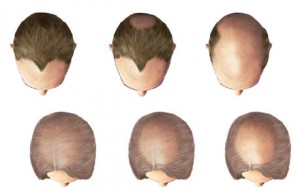
Q:
Hey Dr. Parsa Mohebi,
I’m grateful you took time out to see me on Saturday. The letter that gave a summary of what we talked about was very thorough and I just wanted to say thanks for that.
Since the last time we met, I did some of my own research and came up with a few queries:
1) When it comes to giving a name to my hair loss pattern, is Alopecia the correct way to describe it?
2) Would a Cortizone shot be an option for me?
3) Is laser therapy OK?
4) If I happen to use minoxidil, I’m wondering if it has to be 2% or would a higher percentage result in more hair growth and faster hair growth?
5) I was told to receive a complete medical evaluation, do you know of a doctor I can go to? I want someone I can trust.
Thanks again for taking the time to see me and also to accommodate my questions.
Sincerely,
Stephen
-
A:
Hello Stephen,
I’ve provided answers to your questions in chronological order.
1) When it comes to giving a name to my hair loss pattern, is Alopecia the correct way to describe it?
Alopecia, literally, would be defined as hair loss. There are many different types of alopecia or hair loss, such as male patterned alopecia or female patterned alopecia or alopecia cicatricial. I believe the pattern on your head is a male pattern since hair was lost in the frontal area as you kept hair on the donor area intact. This is the reason you may be a potential candidate for a hair transplant since your medical evaluation stated that you’re not medically treatable for hair loss.
2) Would a Cortizon shot be an option for me?
Absolutely not. But steroid shots are sometimes used for Alopecia Areata (AA), which is an autoimmune disorder. Alopecia Areata is a hair loss condition with patchy hair loss spots. Your condition is not Alopecia Areata.
3) Would you consider laser therapy?
I do not recommend laser therapy for hair loss in the form of laser comb or laser machines because of the lack of solid medical evidence that support their effectiveness at this time.
4) If I were to use Monoxidil, does it have to be 2% or a higher percentage would yield more and faster hair growth?
You can start with 2% and then you need to be re-evaluated in six to 12 months and a treatment plan might need to be adjusted at that time.
5) you recommended a complete medical evaluation, could you please recommend someone that you trust?
Any good internist or endocrinologist could follow through with the lab works that you need. Our letter includes the list of medical conditions that should be considered and lab works to rule out those women like you who have hair loss. You can share my letter with any good internist or endocrinologist and he or she should be able to follow through with your lab result and treat any treatable conditions that could possibly be found.
Have a great day,
Tags: alopecia areata, hair loss, hair loss pattern, hair loss treatment, laser therapy, laser therapy for hair loss, minoxidil
Posted in Bakersfield hair transplant, California hair transplant, hair loss medication, hair loss products, hair transplant, men hair restoration, Newport Beach hair transplant, Orange County hair transplant | No Comments »
Saturday, January 9th, 2010
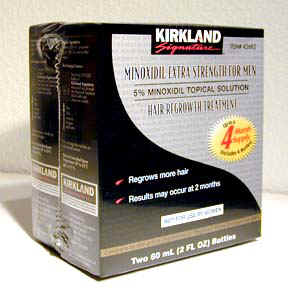
The possibility of restoring hair loss through alternative hair restoration options such as by using finasteride or Rogaine is an issue some people may be wondering about. Although hair restoration through these shortcut methods (without a hair transplant procedure) might be OK for some people, I can’t advocate it as a full-fledged solution. Advertisements may try to sway you into believing it is the answer.
Today, FDA has OK’d certain medications for hair loss prevention: finasteride and minoxidil. I must say, both are legitimate treatments, but they may have various indications for a male and female baldness pattern. But they are not, I repeat, they are not a cure-all solution for male patterned baldness, as other pharmacy industry experts may try to get you to believe.
A hair transplant ought to be thought of as a preventive agent, along with other alternativest. And also as vital part of a bigger plan on looking your best. A lot of men and women experience shock loss after a hair transplant surgery; these people are required to try preventative measures like finasteride, at least a month or two before the hair transplant.
Since hair restoration surgery started (in the 1990s) and until recently, when a hair restoration surgery was done, shock loss had been a significant issue hair transplant patients had to deal with.
But these days, a good majority of patients go on finasteride after a hair transplant surgery.
Tags: fda, finasteride, hair loss treatment, medical hair restoration, minixidil, prevention of balding, shock loss
Posted in Bakersfield hair transplant, California hair transplant, hair loss medication, hair loss products, Newport Beach hair transplant, Orange County hair transplant | No Comments »
Tuesday, January 5th, 2010

The fruit Serenoa Repens produces Saw Palmetto. Saw Palmetto is an extract of it. Saw Palmetto has plenty of fatty acids and phytosterols. Considered by many to be an alternative medicine for different kinds of indications, most notably benign prostatic hyperplasia (BPH).
People who are diagnosed with benign prostatic hyperplasia (BPH) have enlarged prostates have difficulty urinating to the point that patient may need prostate surgery for it.
The part Saw Palmetto plays in hair restoration has been well researched. Incredibly, for a lot of people, Saw Palmetto is a plant-based treatment which, up to a certain point, can reverse the hair loss process or delay hair loss. Saw Palmetto’s bio active ingredients block the conversion of testosterone into dihydrotestosterone (DHT).
So, on the hair follicle level, Saw Palmetto is able to halt the process of hair loss. In addition, Saw Palmetto promotes the increased thickness of miniaturized hair, helping them grow longer. In mechanism, the Saw Palmetto effect is sort of similar to finasteride or other DHT blockers. Available in oil extract, Saw Palmetto can be used topically on hair scalps or as pills to treat prostate enlargement.
Tags: balding prevention, benign prostatis hyperplasia, BPH, dht, dihydrotestostrone, finasteride, hair loss product, hair loss treatment, male patterned baldness, saw palmetto, Saw Palmetto Extract
Posted in California hair transplant, hair loss medication, hair loss products, men hair restoration, Newport Beach hair transplant, Orange County hair transplant | No Comments »
Saturday, October 17th, 2009
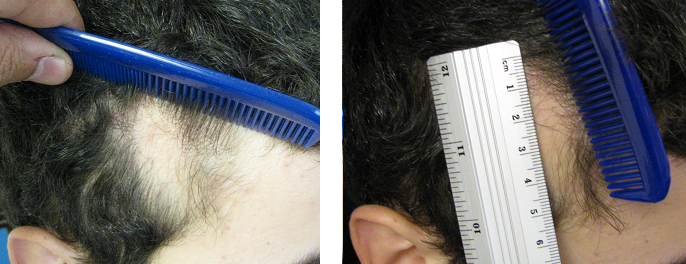 Temporal triangular alopecia also known as TTA is a congenital hair loss condition in which the patient had a limited balding area on his temples. The condition is assumed to be congenital and is generally obvious since birth. The balding spot may contain normal numbers of hairs, but they are all vellus and generally not visible. Temporal triangular alopecia also known as TTA is a congenital hair loss condition in which the patient had a limited balding area on his temples. The condition is assumed to be congenital and is generally obvious since birth. The balding spot may contain normal numbers of hairs, but they are all vellus and generally not visible.
Congenital temporal triangular alopecia is considered a nonscarring alopecia and if biopsied should not be mistaken for Cicatricial alopecia. TTA respond well to hair transplantation and there are some studies that patient were treated with hair transplant surgery successfully with adequate coverage.
The condition could be treated by a hair restoration surgery at any age. We at the California offices of US Hair Restoration offer treatments for congenital temporal trangular alopecia.
Tags: congenital triangular alopecia, hair loss, hair loss treatment, hair transplant surgery, patchy hair loss, temporal triangular alopecia, TTA
Posted in California hair transplant, hair transplant | No Comments »
Thursday, October 1st, 2009
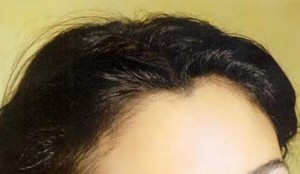 In a recent article published in Dermatologic Surgery Journal, Dr. Nausbaum et Al discusses naturally occurring female hairlines. His study was based on a large panel of normal women for the purpose of comparing and contrasting hairline variables to attain the perfect female hairline. Given that male hair restoration has almost always been the focus of hair restoration this new information can help benefit women who are candidates for hair transplant surgery. In a recent article published in Dermatologic Surgery Journal, Dr. Nausbaum et Al discusses naturally occurring female hairlines. His study was based on a large panel of normal women for the purpose of comparing and contrasting hairline variables to attain the perfect female hairline. Given that male hair restoration has almost always been the focus of hair restoration this new information can help benefit women who are candidates for hair transplant surgery.
The author came up with a guide or type of blueprint to help determine the best hairline for a woman. This guide was based on the average recorded parameters in women with healthy, non-balding hair. Among a panel of 360 women, the most dominant feature found in 81% of the women was in fact the presence of the widow’s peak. In addition, around 90% of these women also showed lateral mounds.
It’s great to know that there is now a bigger emphasis in hair restoration for women with more viable information and techniques to help solve their hair loss. Our hair transplant surgical offices already specialize in female hairline reconstruction in women suffering from female patterned hair loss or male patterned hair loss. This technique has also been applied on transgender (male to female) patients to help soften and alter their masculine features.
We at our California offices of US Hair Restoration perform transgender hair transplants regularly and I personally believe that hair restoration is one of the most key procedures in sex reassignments process for transsexuals.
Tags: female hair line, female hair transplant, female hairline, hair loss treatment, hair transplant surgery, Los Angeles hair transplant, men hair loss, natural female hairline, transgender, transgender hair transplant, transsexual, widow's peak, woman hair restoration, women hair loss
Posted in California hair transplant | No Comments »
Sunday, September 20th, 2009
Hair removal has been practiced in different ways and can be achieved with either temporary or permanent relief. From regular razor trimming, waxing, electrolysis, and advanced laser hair removal these procedures do the job and do them well. As of recent, we had a patient ask us of a different method of hair removal. He was considering using follicular unit extraction (FUE) procedure to achieve this.
“Instead of placing the hair follicle in my scalp, can the extractions be disposed?” His goal was to remove unwanted facial hair quickly and permanently. This is actually a possibility for almost any person who does not want to have a hair transplant procedure, per say. We recommended that the patient at least be evaluated through FOX test to see if the hair grafts can be removed entirely through FUE. This means the grafts have to come out whole after making the FUE incision.
If the hair graft units cannot be extracted whole through FOX test, then the procedure will not be effective. The reason why the hair graft must come out whole is to prevent leaving the bulb in its place. If the bulb remains then the hair shaft may continue to grow normally. A fully extracted graft unit can then be replaced (or disposed).
Tags: follicular unit extraction, fox, fue, FUE hair transplant, FUE transplant, hair loss treatment, laser, laser hair removal, scar
Posted in Uncategorized | No Comments »
Tuesday, September 8th, 2009
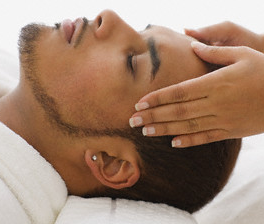
We understand people like to pamper themselves. A patient of ours wrote to us regarding a scalp and body massage. He had his hair transplant surgery in our Encino Surgical Office almost 8 months ago and asked, “Would get a head massage risk loosening the implants?” He also wanted to know if that would help increase circulation to the grafts and improve growth.
Hair that has been transplanted over 3 months ago and is growing normally is considered permanent and cannot be dislodged from your scalp. The main concern is in the first weeks of a hair transplant surgery when the hair is still settling in. Even so, some cases where the hair is removed the active part of the follicle may still remain and a new follicle will grow shortly after. At this point, hair cannot be harmed.
However, there is no proof that a scalp massage to increase scalp circulation is proven to increase the quality of existing or newly transplanted hair. More so, it has also not been proven that lack of blood circulation or oxygenation in scalp will cause hair loss.
Tags: after hair transplant, complications, Encino hair transplant, hair loss treatment, hair transplant surgeon, hair transplant surgery, hair transplatation, male patterned hairloss, men hair loss, scalp massage, scalp massage after hair transplant, us hair restoration
Posted in Uncategorized | No Comments »
|
|

 Medical Treatment for Increase Hair Loss from Androgenic Alopecia
Medical Treatment for Increase Hair Loss from Androgenic Alopecia




